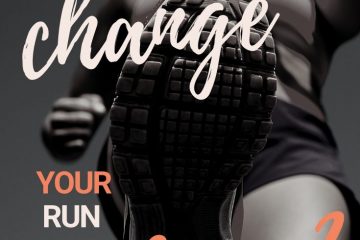What you should know about Functional Threshold Power [FTP] testing

What is FTP and why is it important?
What is functional threshold power exactly and why should you care about it? The short answer is that if you want ride faster and stronger, whether it’s in the local group ride or a race, then you should learn yours! Read below to learn the ins and outs of functional threshold power.
Your functional threshold power is important no matter what kind of cycling you do. In a cycling race, a thousand watt sprint may be important to take the win, but it’s the riders FTP that keeps him in the hunt before that moment approaches.
And in a triathlon, most athletes are racing against the clock so it’s the ability to have a high FTP and hold a high percentage of that number that matters.
And even if you’re not racing, FTP plays an important role in whether you can stay on your friend’s wheel during a flat group ride versus getting dropped off the back.
What is functional threshold power?
First, let’s discuss the terms FTP or Functional Threshold Power. FTP is defined as the average power you can sustain for about an hour.
It’s an important number for you to know and track if getting faster and stronger is your goal. In this article we’ll look more in depth at FTP, training zones, and testing frequency.
FTP versus Lactate Threshold
FTP relates closely to Lactate Threshold. Lactate Threshold is the point where lactate begins to accumulate in the blood, that is, when your body is producing more lactate than it can consume.
Lactate threshold is what’s happening inside the body and can only be truly measured with a blood lactate test (think someone pricking your finger while you perform an indoor time trial).
FTP on the other hand, can be measured in a field test and only requires a power meter, bike, and motivated athlete.
Think of V02 max as your upper limit of aerobic energy production and FTP as the percentage of that limit that you can sustain. Both are important when predicting endurance performance.
Other factors include VO2 Max (maximal oxygen consumption) and efficiency. Of these three variables, FTP is the variable that is both easily measured and trainable.
Even if you don’t train with power you’ve likely felt the moment where you’ve crossed the threshold zone. To keep things simple, when you ride above your FTP you will tire quickly, and if you’re riding below FTP you’ll be able to sustain your output for much longer. You can read more about these different factors influence cycling performance in Joe Friel’s blog.
Related: Everything you need to know about heart rate and running
What is power in cycling
Just as pace is the gold standard in running and swimming, power is the best way to measure cycling performance.
Power is the most important cycling metric because it’s objective, literally a product of force and cadence. Speed is a poor metric for cycling because too many variables such as terrain and wind, will affect your speed on any given day.
Heart rate is a good metric but it’s only giving you a piece of the equation, your subjective effort versus a measure of the work being performed.
That said, the use of power zones is enhanced when you use heart rate zones in conjunction. Simply put, your power is the actual work your body is doing, while your heart rate is the response to that work.
Power is objective and heart rate is subjective. If you use both together with zones that are properly set, you will not have to worry about overbiking in your next race!
If you’re using power and heart rate in a race, it’s important to keep in mind that heart rate targets always trumps power. You can read more about Dr. Andrew Coggan’s power and heart rate zones on the TrainingPeaks blog.
Testing your FTP and setting training zones
Setting an FTP is the first step to set your zones and monitor improvement. Beginners should test their FTP more frequently, say, every few months, while athletes who’ve been training for years should test a few times a season.
Even if you are just getting started training after a break don’t make the mistake of waiting until you’re ‘in shape’ to test! It’s best to set a baseline initially for comparison later. There is also a learning curve to testing. After experiencing the test a few times, you will find that your performance improves in part simply from learning to test better. There are several ways to test:
Method 1: Using a trainer
With all the software available to keep you focused (sufferfest, trainerroad, zwift), this method is easier than it used to be. While some athletes will have differences in their indoor and outdoor numbers, generally this difference is mostly mitigated if the athlete is accustomed to riding indoors regularly.
When testing indoors, be sure you are in a cool area, with a good fan. Since much of our cycling energy goes not only to the pedals but to disperse heat, you will want to remain as cool as possible during the test.
A note on smart trainers (trainers with power meters), if you have an onbike power meter, you will use those numbers for your result so you can compare apples to apples down the road when you test again.
Related: What every cyclist should know about cadence
Method 2: Using a Long Hill or Flat Outdoors
If you have a long hill or mountain with a grade of 3 – 5%, then you have a fantastic place to test your FTP. This method is generally more preferable than flat ground. Some athletes may read a bit higher on a hill climb than a test on flat ground due to different muscle recruitment.
The important feature of the area you select is that it be free of traffic, pedestrians, or anything else that would make it unsafe to cycle as hard as you possibly can.
Related: How to buy your first bike
How to field test your FTP
This basic test is sourced from Dr. Andrew Coggan in Racing and Training with a Power Meter.
Ideally this test should take place after a rest or easy day prior. No exercise before the test. Make sure you are fueled and hydrated before you start!
After you’ve identified your testing location, the procedure for actual testing is the same. Get in a good warmup (20’) with a few high cadence spinups (4 x 1’ with equal rest). Now it’s time for the important part.
The actual test is 20’ of the highest average power you can sustain. Pacing is the most important part of the equation. I generally tell athletes to think of the test like a 5k foot race. The first third of the test, you should feel like you’re going at a 95% effort. The second ‘mile’ or second third of the test, you should feel like you’re at a 99% effort. The final five minutes you should be wondering if you’ll make it another 30” or not. Finally the last 60” give it EVERYTHING you’ve got leaving nothing on the table.
After you’ve spun your legs out for a few minutes, then take 95% of your normalized power from the 20’ test. That number is roughly your functional threshold power.
Related: How to start cycling from scratch
Setting and using your cycling power zones
Now that you have an accurate FTP, it’s time to set your zones using Dr. Andrew Coggan’s Power Levels. These numbers will help give shape and meaning to your training as you seek to develop different energy systems.
For example, one mistake made by many novice athletes is that of going medium hard every time they train. This eventually leads to stagnation, plateau, and sometimes even injury.
Furthermore, this constant ‘grey zone’ training means that your body never recovers with easy training, and when it’s time to go really hard, you cannot make the most of the training stimulus since you cannot hit your numbers.
Another important reason for zones is that it allows you to more closely adhere to the plan for the day. Whether you’re using a coach or a training plan online, your workouts will usually be described in zones.
It’s important to stick to those prescriptions since each workout has a particular purpose. For example, on an easy ride day, your plan may instruct you to keep your ride in zones 1 for the purpose of recovery.
A well put together plan will consider all of the elements necessary for optimal performance in your target event and include those in your training plan.

How Often should you test your FTP?
It’s important to test frequently enough to keep your zones accurate. If you’re a beginner who’s training hard and improving rapidly, you should test more often than someone who’s been training regularly for years.
As a rule of thumb, testing every 6 – 8 weeks is a good frequency for someone who’s been training in cycling for less than a few years. It’s also a good frequency for a veteran who is in the midst of a focused block of work designed to raise FTP.
If your performance has been steady for a few years and other indicators show performance is steady, you can test with less frequency, say, a few times a season instead.

Hi, I’m Bethany–coach, author of Courage to Tri, 2x Kona qualifier, and twin mom. I believe if you have a body you’re an athlete. Grab my free 5k plan to start your own athletic journey.

Like this guide? Pin it!




1 Comment
A Triathlete's Guide to Training with Power — Bethany Rutledge · July 30, 2019 at 4:25 pm
[…] If you haven’t tested your functional threshold power yet, but sure to do that first. Here’s How: What your functional threshold power is and how to test it. […]
Comments are closed.